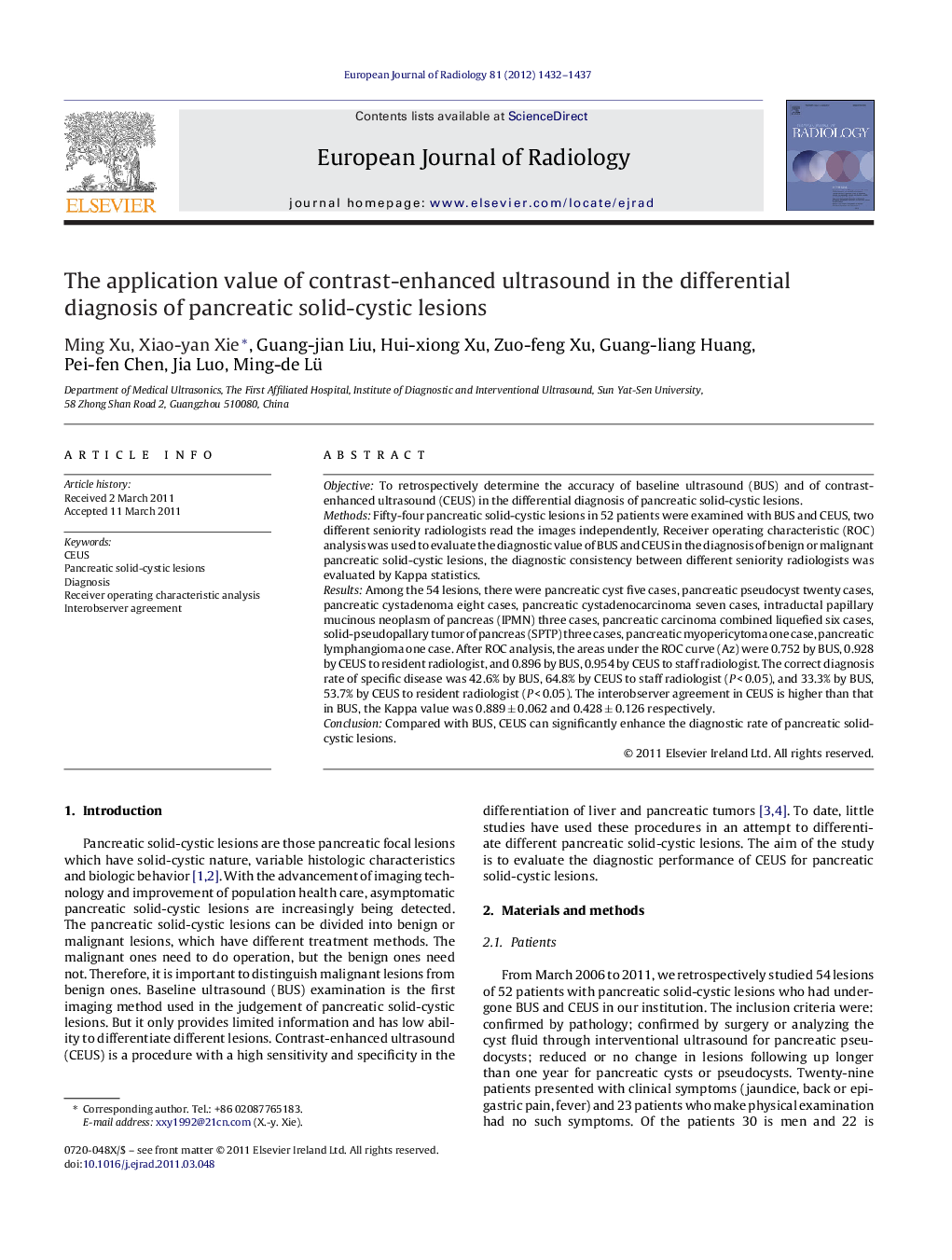| Article ID | Journal | Published Year | Pages | File Type |
|---|---|---|---|---|
| 4225749 | European Journal of Radiology | 2012 | 6 Pages |
ObjectiveTo retrospectively determine the accuracy of baseline ultrasound (BUS) and of contrast-enhanced ultrasound (CEUS) in the differential diagnosis of pancreatic solid-cystic lesions.MethodsFifty-four pancreatic solid-cystic lesions in 52 patients were examined with BUS and CEUS, two different seniority radiologists read the images independently, Receiver operating characteristic (ROC) analysis was used to evaluate the diagnostic value of BUS and CEUS in the diagnosis of benign or malignant pancreatic solid-cystic lesions, the diagnostic consistency between different seniority radiologists was evaluated by Kappa statistics.ResultsAmong the 54 lesions, there were pancreatic cyst five cases, pancreatic pseudocyst twenty cases, pancreatic cystadenoma eight cases, pancreatic cystadenocarcinoma seven cases, intraductal papillary mucinous neoplasm of pancreas (IPMN) three cases, pancreatic carcinoma combined liquefied six cases, solid-pseudopallary tumor of pancreas (SPTP) three cases, pancreatic myopericytoma one case, pancreatic lymphangioma one case. After ROC analysis, the areas under the ROC curve (Az) were 0.752 by BUS, 0.928 by CEUS to resident radiologist, and 0.896 by BUS, 0.954 by CEUS to staff radiologist. The correct diagnosis rate of specific disease was 42.6% by BUS, 64.8% by CEUS to staff radiologist (P < 0.05), and 33.3% by BUS, 53.7% by CEUS to resident radiologist (P < 0.05). The interobserver agreement in CEUS is higher than that in BUS, the Kappa value was 0.889 ± 0.062 and 0.428 ± 0.126 respectively.ConclusionCompared with BUS, CEUS can significantly enhance the diagnostic rate of pancreatic solid-cystic lesions.
